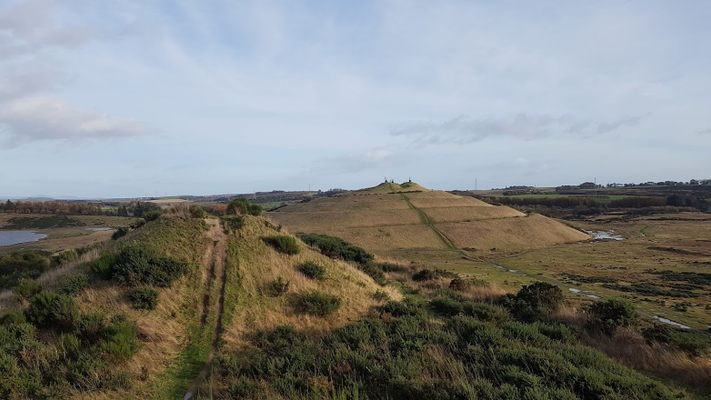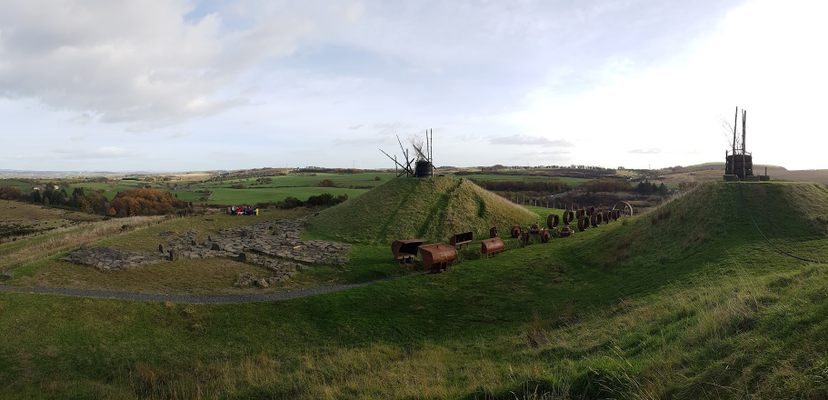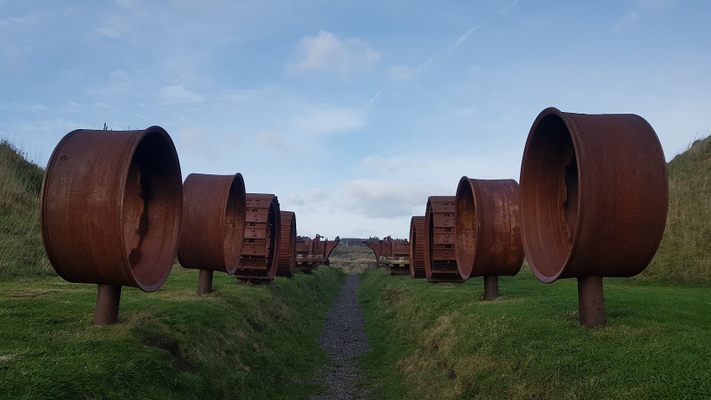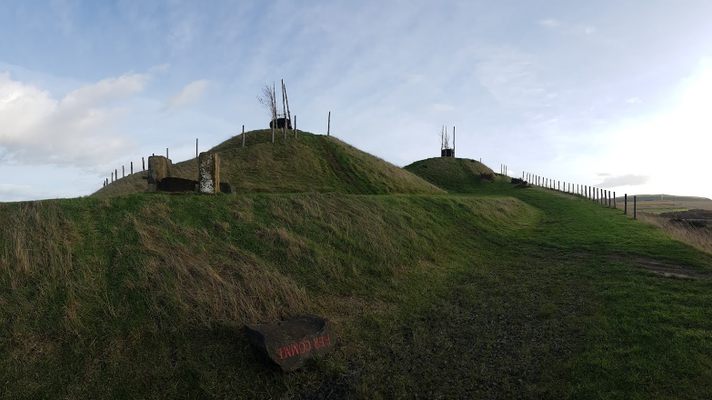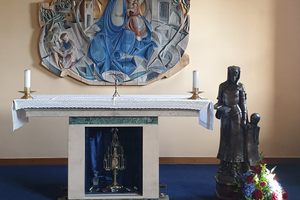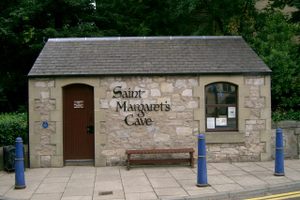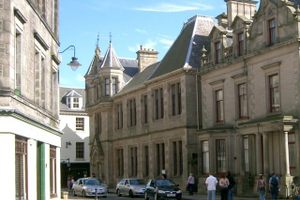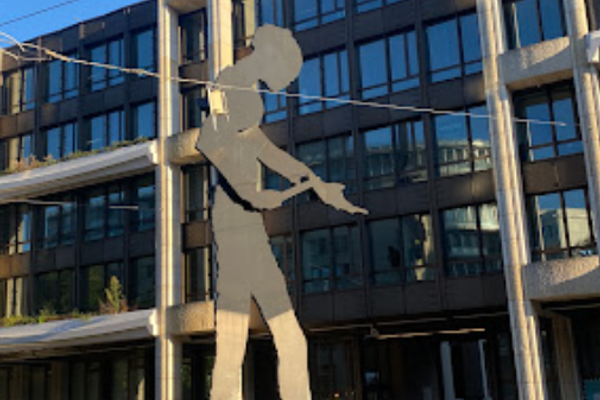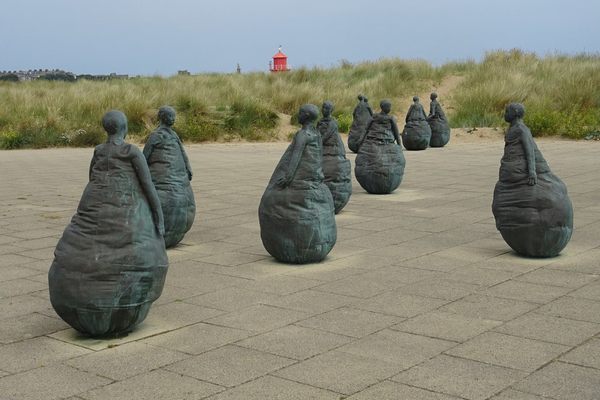About
This corner of Fife is renowned for its long history of coal mining, with several deep-level mines peppering the area. As technology developed, the deep coal seams were extracted using open cast mining techniques, gouging huge craters out of the landscape. This mine, St. Ninians, was operating right into the 21st century and swallowed up the remains of the village of Lassodie. A young Sean Connery was said to be a regular visitor to the village after his grandparents retired there in the early 1930s.
Once the machinery fell silent, thoughts turned to how to best heal the wounds that decades of extraction had done to this very visible hillside beside the M90—one of the country’s busiest routes north. Local developers approached American artist and cultural theorist Charles Jencks who has a history of numerous landscape artworks across Scotland: the Garden of Cosmic Speculation, Cells of Life at Jupiter Artland, Crawick Multiverse, and Ueda at the Edinburgh Gallery of Modern Art.
In this, arguably his most ambitious project, the landforms, lochs, and boulders were to represent a journey around four continents. The shape of Scotland was to be surrounded by geometric mounds representing each region most influenced by the emigration of Scots.
The scale of what was planned becomes immediately apparent as you scale the hill and peer down into the yawning chasm in the landscape. The 930-acre site is roughly the size of more than 700 football pitches, making it far and away the largest piece of artwork in Scotland.
Unfortunately, like many grand plans, the project was forced to scale back due to funding problems. The owner, Scottish Coal, was bankrupted in 2013 and the project was put indefinitely on hold. What remains is a rather bleak and desolate landscape giving an eerie post-industrial feel. The remains of the ambitious landscaping effort can still clearly be seen under the wild grassland. The imposing Europe mound is well defined with three giant barbed mounds and a stone map of the continent. The North America mound can also be scaled where two less defined dimples can be found at the top.
Related Tags
Know Before You Go
The site is free to enter and is popular with local dog walkers. Walkers are welcome, although there are signs warning of CCTV and drone surveillance Don't be alarmed, this is just to ward off local dirt bikers who clearly sometimes take advantage of the unique opportunity the site brings.
Parking is very limited at the site and is policed with large concrete boulders. The best approach is made from the nearby village of Kingseat to the south by a short 30-minute walk. Follow the long-distance "Fife Pilgrim Way" footpath across the impressive causeway of Loch Fitty where the three intriguing peaks seem to rise up out of the water ahead.
Although you can take a "shortcut" up the hills to avoid walking around the spiral, be warned the path is very steep. Good footwear is strongly recommended, especially in wet weather.
Free parking is available at Kingseat Community Centre where you can read more about the mining history of the area. Kingseat can also be accessed by numerous bus connections from Dunfermline (81 or 7B)
Flavors of Scotland: Beyond the Haggis
Smoked seafood, single malt whisky, and warm hospitality.
Book NowCommunity Contributors
Added By
Published
December 6, 2021

